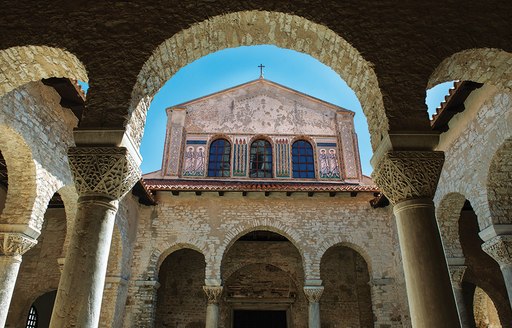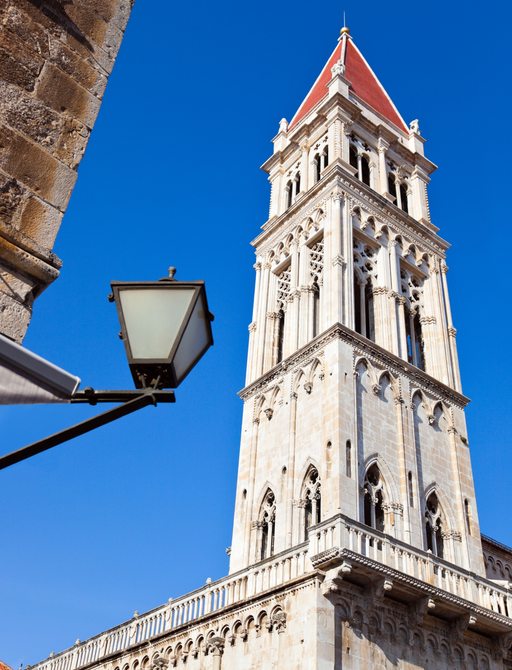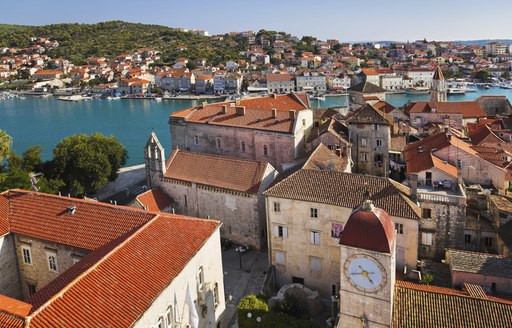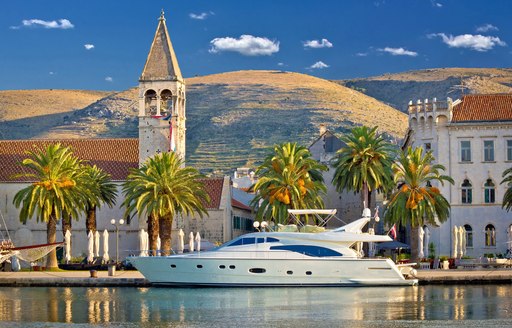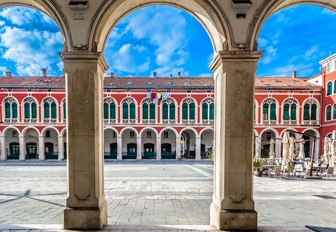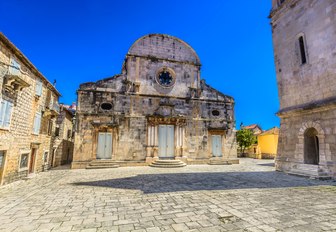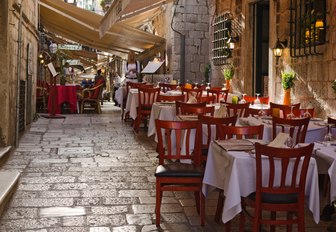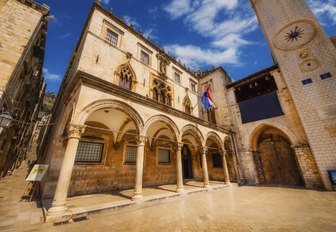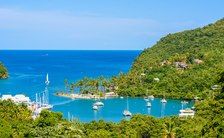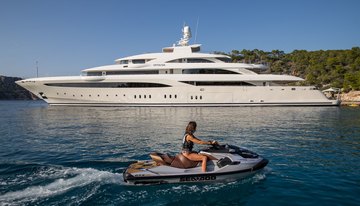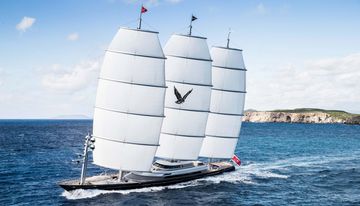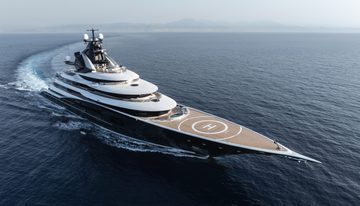Croatia is home to an impressive 10 UNESCO World Heritage Sites. Luckily, seven of these world-class relics are located along the Adriatic Coast, making them easily accessible for those visiting the country by luxury yacht.
A World Heritage Site is one that the UNESCO committee deems to be of ‘outstanding universal value’. While some of the Croatian sites come as no surprise, take the historic old town of Dubrovnik, for example, others like the Greek agriculture plain on Hvar Island are yet to make the sightseer’s bucket list.
Listed from north to south, here are seven UNESCO World Heritage Sites to visit on a Croatia yacht charter. Be sure to incorporate them into your itinerary for an added dose of cultural and historical wonder.
The Roman town of Poreč sits on the western coast of Istria, with its Venetian wall, 2,000-year-old paved Decumanus passageway, colourful harbour and charming Old Town pulling in the crowds. But, its main draw is undoubtedly the treasured Episcopal Complex of the Euphrasian Basilica.
With parts dating back to the fourth century, the complex is said to be the most complete surviving example of its kind and home to some outstanding examples of religious architecture.
The basilica itself was not built until two centuries later and, decorated with glittering wall mosaics, stands out due to its exceptional combination of classical and Byzantine elements.
For these reasons, the ancient attraction was inscribed onto the World Heritage List in 1997. Meanwhile, Poreč manages to combine a well-developed, leisurely tourist infrastructure while keeping its history intact.
This Gothic-Renaissance cathedral is the crowning architectural glory of the Dalmatian Coast. Built of stone quarried from the islands of Brač, Korčula, Rab and Krk, it’s reputed to be the largest church in the world built entirely from stone without brick or wooden supports.
Plus, the structure is unique in that the interior shape corresponds exactly to the exterior and, with these credentials, it’s no wonder the cathedral was listed as a World Heritage Site in 2000. Another intriguing feature is an external wall frieze which is adorned with 74 sculpted stone faces of prominent Šibenik citizens.
A visit to St James Cathedral is definitely worth a detour on your luxury yacht charter. Afterward, make sure you have time to explore the stone labyrinth of steep backstreets and alleys in Šibenik’s medieval old town, which glows white against the turquoise waters of the peaceful bay below.
Located on a tiny island northwest of Split, Trogir was chosen as a World Heritage Site in 1997 to celebrate its remarkable urban continuity. This means centuries of planning and building have come together seamlessly.
Greeks first settled in the coastal city of Trogir in 300BC and its orthogonal street layout dates back to the Hellenistic period. Over the following centuries, however, an abundance of Romanesque, Renaissance and Baroque buildings sprang up across the Old Town and survive to this day.
Meander through the warren of cobbled streets in the walled medieval centre and take in key sights such as the Romanesque Cathedral of St Lawrence, the 15th-century Kamerlengo fortress and the Gothic-Renaissance Grand Cipiko Palace.
The wide seaside promenade, known as the Riva, is lined with bars and restaurants and, during the summer, boasts a lively atmosphere as luxury yachts flank the harbour wall.
In 2016, the collection of 6,000-odd medieval tombstones known as stecci became a UNESCO World Heritage site. There are 30 stecci sites in total, spread across the Balkan region: 22 are in Bosnia and Herzegovina, 3 in Montenegro and 3 in Serbia. Croatia has 2.
One of the Croatian sites is located in Velika and Mala Crljivica near Imotski in Cista Velika, northeast of Split. This is reachable in just under an hour’s drive from the Dalmatian coast.
Dating from the 12th to the 16th century, the tombstones are made from local limestone and are decorated with various motifs and inscriptions inspired by both religion and everyday life. They represent iconographic continuities within medieval Europe as well as locally distinctive traditions.
Emperor Diocletian built his palace between the late 3rd and early 4th century and voluntarily gave up ruling the Roman Empire on 1 May 305 to settle in the palatial abode, which spread across 30,000 square metres.
Today, the 220 old buildings of the ancient fortress remain, housing shops, cafes, restaurants and apartments, making up Spilt's atmospheric Old Town. Indeed, don’t come here expecting a palace or museum; this is the living heart of Croatia’s second-largest city.
Home to around 3,000 people, the narrow streets hide passageways and courtyards, some deserted, others buzzing with music from bars and cafes. And the historical treasures do not end here.
There is the Cathedral of St Domnius, which was built in the Middle Ages reusing materials from the ancient mausoleum, 12th and 13th century Romanesque churches, medieval fortifications, and palaces in Gothic, Renaissance and Baroque styles.
Gaining its status as a World Heritage Site in 2008, this fertile plain lies east of Stari Grad, Hvar’s oldest town. The Ionian Greeks from Paros, who founded the town in the fourth century, set about dividing the surrounding land into equal cadastral plots, known locally as chora, and the Stari Grad Plain was born.
Ever since this time, the agricultural activity of the plain, which mainly centres on grapes and olives, has remained the same. Some of the ancient stone walls and trims, or small stone shelters, remain too, showcasing the 24-century-old system of land division adopted by the ancient Greeks.
Hvar is perhaps better known for its cosmopolitan hub, Hvar Town. Here, 13th-century walls, beautifully ornamented Gothic palaces and thriving harbour create an idyllic backdrop for the glamorous party scene. Stari Grad, however, is perfect for luxury yacht-goers looking for a more leisurely pace.
Jutting into the Adriatic Sea against a rugged mountain backdrop, the Old City of Dubrovnik is considered as one of the finest and best preserved medieval cities in Europe. Surrounded by ancient city walls, the historic heart boasts a profusion of Gothic, Renaissance and Baroque churches, monasteries, palaces and fountains.
It’s impossible to tell that many of the buildings have been preserved after being severely damaged by an earthquake in 1667 and, again, by armed conflict in the 1990s. Among the top attractions to look out for are the Onofrio Fountain, the Franciscan Monastery and the Sponza Palace
You will no doubt find it hard to pull yourself away from the old town’s charming atmosphere and back to your superyacht anchored just off the city walls.
For more information on planning a Croatia yacht charter, contact your preferred charter broker.
Alternatively, browse and compare all luxury yachts available for charter in Croatia.


